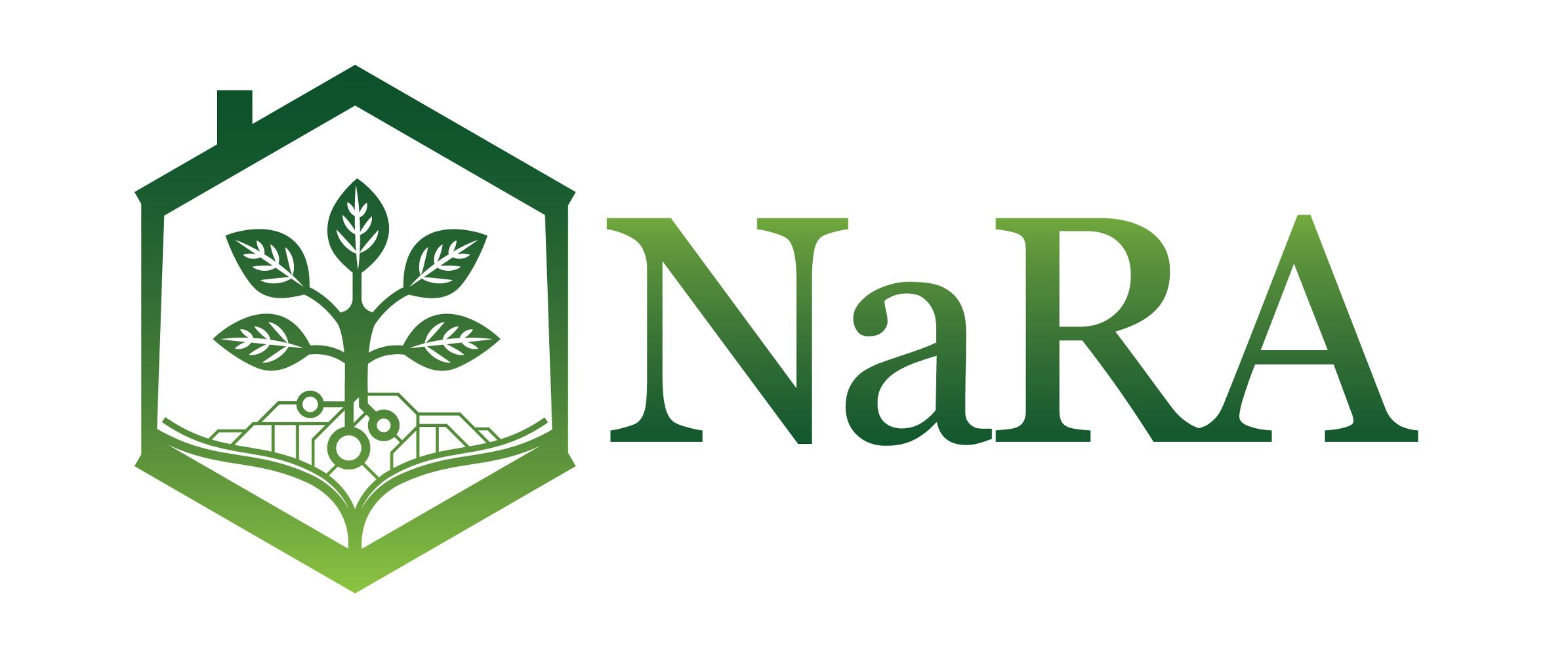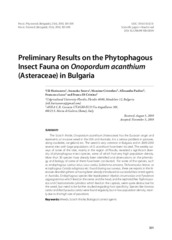Preliminary Results on the Phytophagous Insect Fauna on Onopordum acanthium (Asteraceae) in Bulgaria
Preliminarni rezultati ispitivanja fitofagne faune insekata na Onopordum acanthium (Asteraceae) u Bugarskoj
| dc.contributor.author | Harizanova, Vili | |
| dc.contributor.author | Stoeva, Atanaska | |
| dc.contributor.author | Cristofaro, Massimo | |
| dc.contributor.author | Paolini, Allesandra | |
| dc.contributor.author | Lecce, Francesca | |
| dc.contributor.author | Di Cristina, Franca | |
| dc.date.accessioned | 2015-11-07T13:48:19Z | |
| dc.date.available | 2015-11-07T13:48:19Z | |
| dc.identifier.uri | http://arhiva.nara.ac.rs/handle/123456789/1372 | |
| dc.description.abstract | The Scotch thistle, Onopordum acanthium (Asteraceae) has the Eurasian origin and represents an invasive weed in the USA and Australia. It is a serious problem in pastures, along roadsides, rangeland, etc. The weed is very common in Bulgaria and in 2009-2010 several sites with large populations of O. acanthium have been located. The weekly surveys of some of the sites, mainly in the region of Plovdiv, revealed a significant diversity of phytophagous insect species, some of which had very high population density. More than 30 species have already been identified and observations on the phenology and biology of some of them have been conducted. For some of the species, such as endophagous Larinus latus, Lixus cardui, Eublemma amoena, Trichosirocalus briesei, or ectophagous Cassida rubiginosa etc. found during our surveys, there are reports in the literature describing them as having been already introduced as successful biocontrol agents in Australia. Endophagous species like lepidopteran Myelois circumvoluta and Pyroderces argyrogrammos which feed on the stems and the head, and the tephritid flies Tephritis postica and Chaetostomella cylindrica which feed on the capitula, seem quite destructive for the weed, but need to be further studied regarding host specificity. Species like Vanessa cardui and Brachycaudus cardui were found regularly, but in low population density, mainly due to the high rate of parasitism. | en |
| dc.description.abstract | Čkalj, Onopordum acanthium (Asteraceae), vodi poreklo iz Evrope i Azije i u SAD i Australiji se smatra invazivnom korovskom vrstom. Predstavlja veliki problem na livadama, pored puteva, na pašnjacima, itd. Ovaj korov je vrlo zastupljen u Bugarskoj i u 2009. i 2010. zabeležena je pojava brojnih populacija O. acanthium na nekoliko lokacija. Nedeljnim osmatranjem na nekim lokacijama, uglavnom u regionu Plovdiva, utvrđeno je prisustvo velikog broja različitih vrsta fitofagnih insekata, od kojih su neke imale brojnu populaciju. Identifikovano je više od 30 vrsta i izvršeno je ispitivanje fenologije i biologije nekih od njih. Za neke od vrsta koje su identifikovane, kao što su endofagne Larinus latus, Lixus cardui, Eublemma amoena, Trichosirocalus briesei, ili ektofagne Cassida rubiginosa, itd., postoje podaci u literaturi da su u Australiji s uspehom primenjene kao agensi biološke kontrole. Endofagne vrste insekata iz reda Lepidoptera, Myelois circumvoluta i Pyroderces argyrogrammos, koje se hrane stabljikama i cvetom, kao i mušice Tephritis postica i Chaetostomella cylindrica koje se hrane cvetom, deluju prilično destruktivno na korov, ali je potrebno sprovesti dodatna ispitivanja kako bi se izvršila specifikacija domaćina. Vrste kao što su Vanessa cardui i Brachycaudus cardui nađene su na svim lokalitetima, ali u malom broju, uglavnom zbog značajnog prisustva parazitizma. | sr |
| dc.subject | Weeds | en |
| dc.subject | Scotch thistle | en |
| dc.subject | Biological control agents | en |
| dc.subject | Korovi | sr |
| dc.subject | čkalj | sr |
| dc.subject | biološka kontrola | sr |
| dc.title | Preliminary Results on the Phytophagous Insect Fauna on Onopordum acanthium (Asteraceae) in Bulgaria | en |
| dc.title.alternative | Preliminarni rezultati ispitivanja fitofagne faune insekata na Onopordum acanthium (Asteraceae) u Bugarskoj | sr |
Files in this item
This item appears in the following Collection(s)
-
VOL 25 *No.4
http://www.pesting.org.rs/2010.php



